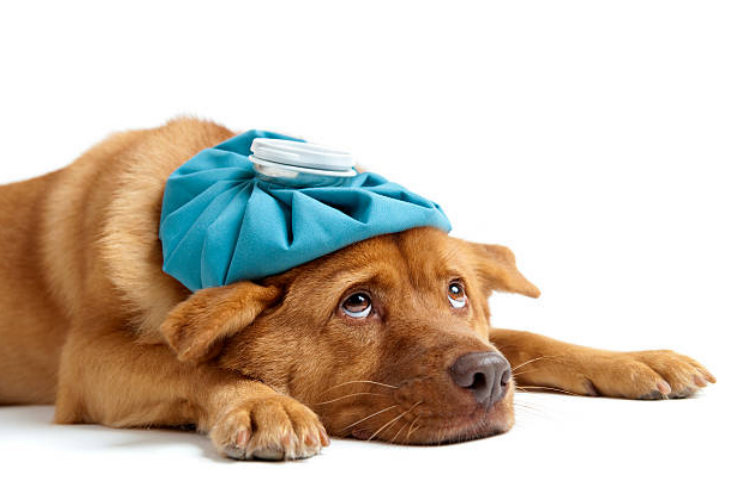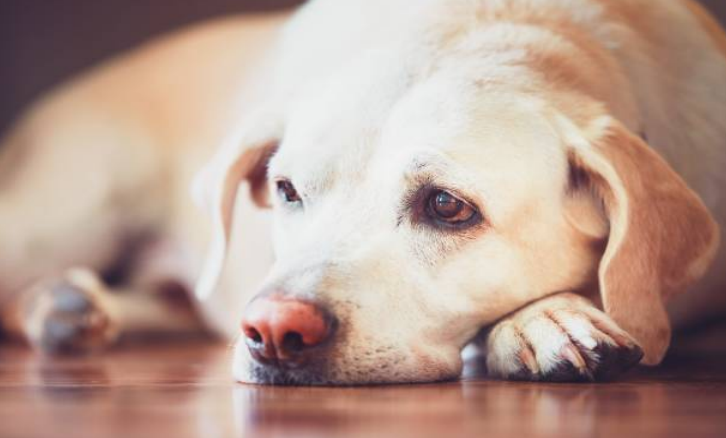-
LLarry alex 2 hours ago
Canine bloody diarrhea is one of the most horrifying things any pet owner will ever witness. Loose stool or blood accumulation means that something is wrong. Some owners believe that an ill dog may limp or not eat, but that is not always true. The dog may run, play, and act normally. So it is hard to assess the degree of danger your dog is in.
If a dog has bloody diarrhea but acting normal, there may be an underlying cause of the issue which has not surfaced yet. It may be in its early stages or may be a result of changes in the diet, mild stress, or irritated intestines. In some instances, the symptom can also point to more severe illness.
Detection of blood in dog stool is not necessarily a serious concern. It simply indicates that the digestive system is being overstrained and needs to be treated. Knowing the causes of bloody diarrhea and warning signs helps dog owners decide when the care of the house is sufficient and when the vet is necessary.

What Bloody Diarrhea in Dogs Really Means
Bloody diarrhea is a clinical sign that points to problems inside the digestive system. The color and consistency of the stool are vital signs. Bright red blood, called hematochezia, usually comes from the lower gastrointestinal tract, like the colon or rectum. Black, the terry stool, known as the fairna, indicates bleeding from the upper part or from the small intestine.
The presence of blood in dog stool does not bring about the disease. It is a sign that may indicate several possible conditions. Some of those are minor and temporary. While others may be serious, the dog may require emergency care. They both are crucial, the amount of blood and how long it stays.
The causes of dog diarrhea can be due to a variety of reasons, including food changes and complicated health problems. Dogs can get ill if they have a poor diet, are parasitic, or they have an infection. Bleeding can also be associated with ulcers, toxins, or diseases which is why it should always be closely monitored.
Most of the bloody diarrhea cases are about the dog gastrointestinal issues that lie beneath the surface, thus, hard to detect by simply looking at the dog. Dog owners must watch closely for unusual signs and monitor if the pet maintains a healthy diet with normal eating patterns. Proper assessment ensures an accurate medical history for the veterinarian.
Common mild reasons
Some cases of bloody diarrhea are mild. These issues cannot immediately affect dog behavior.
Dietary change
Sudden changes in diet can disturb the stomach of your dog. Also, dogs tend to eat garbage, which is a common cause of temporary loose stool.
Stress
Like humans, stress can affect the digestive system of dogs as well. There can be numerous triggers such as travel, fireworks, or moving to a new house.
Acute infection
Short-term bacterial infection can also cause diarrhea. These infections can occur without major symptoms. A dog has bloody diarrhea but acting normal in such cases is because the infection may not be severe.
Parasite
Insects can irritate the intestines. Initial signals often include blood in the dog stool while the dog remains active.
Food sensitivity and allergy
Some dogs cannot tolerate some proteins or materials, so food intolerance can also cause diarrhea with some blood. Apparently, the dog may look fine while the intestine keeps irritating.

Serious Causes You Shouldn’t Dismiss
Some cases of bloody diarrhea indicate serious health risks. Even if a dog looks normal, these problems can also develop rapidly.
Hemorrhagic gastroenteritis
Sudden and severe diarrhea with large amounts of blood may be due to hemorrhagic gastroenteritis. The dog can quickly lose fluids if attention is not paid timely. .
Parvovirusa
Parvovirusa is a viral disease that is dangerous for puppies. The indications may include vomiting, and foul-smelling diarrhea. Early detection of the disease is very important for survival.
Toxins and poison
If your dog has eaten chocolates, rat poison, or toxic plants. These can harm and disturb the stomach and intestines. Blood in dog stool can be one of the first visible signs.
Foreign goods
Dogs can sometimes swallow toys, bones, and other items. These items can cause irritation, internal bleeding, and sometimes immediate death. Veterinary care is required to confirm and remove the object from the dog’s gut.
Underlying health issues
Tumor bleeding may occur in the digestive system. Also clot disorders may lead to bloody stools. The causes of dog diarrhea in such cases are complex and require medical tests.

Warning Signs Things Are Getting Worse
Pet owners should make note of these particular symptoms that are warning signs that the things are getting worse:
Lethargy or Sudden Tiredness
Weakness or sluggishness is a strong indicator that a dog has a certain discomfort, which may be referred to as hidden gastrointestinal issues requiring emergency treatment.
Vomiting
Vomiting is an added burden on the digestive system, and repeated episodes can lead to dehydration and thereby loss of body strength.
Refusal to Eat or Drink
Failure to eat is simply a sign of internal health disturbance in the dogs.
Abdominal Pain or Bloating
A bloated belly and pain is a strong signal that the whole digestive tract is under pressure. This can be caused by obstruction, infection, or internal bleeding.
Signs of Dehydration
Initial signs of dehydration include dry gums and loss of skin elasticity.
Severe Diarrhea
Several loose stools or bloody stools can be an alarming sign. The dog owner should know when to visit a vet for diarrhea, which sometimes becomes fatal.
Safe Home Care for Mild Cases
At home, some dogs recover from mild digestive issues with simple care. The owners are supposed to watch attentively before the condition worsens.
Low fasting
Healthy adult dogs can fast for 12 to 24 hours. It gives the digestive system time to relax. Puppies and senior dogs should not be fasted.
Burning support
Fresh water should always be available. Electrolyte solutions can also help replace lost fluid.
Good Diet
After fasting, feed boiled chicken and a small amount of rice. This diet is easy on the stomach and can reduce irritation.
Supervision
See stool, hunger, and energy levels. A dog has bloody diarrhea but acting normal may actually be normal and can continue to play. The observation helps to detect changes before they become serious.

When to call the Vet and what he will do?
Dogs and puppies that have a weak immune system require rapid care. Large amounts of blood or black stool require immediate attention. Diarrhea that lasts more than 24 to 48 hours is not safe to ignore.
If the condition becomes more serious due to vomiting and weakness and your pet shows signs like pain, swelling, or dehydration would require vet help. The care of the initial vet saves lives and prevents small problems from becoming fatal.
The vet will start with tests like fecal tests, blood examination, x-rays, or ultrasound. These help to identify the causes of diarrhea in dogs. Treatment may include fluids, drugs, divinylbenzene, or antibiotics.
If you find blood in the dog's stool, this indication is itself enough to ask for vet help immediately. Early commencement of the treatment leads to a better prognosis, and the recovery from the disease is also quicker with proper vet help.

Prevention Tips
● Give a good diet to your dog and keep its diet balanced. Adopt a good diet and stick to that balanced diet.
● Keep unhygienic and unsafe foods out of reach of your dog. Don’t let them eat unsafe foods, as this may lead to serious stomach issues.
● Schedule Regular vaccinations and regular vet checkups.
Protip: Arrange routine checkups for early detection of problems. Visit the vet for regular checkups of your dog.
The Final Say
Bloody diarrhea in dogs can be minor, or it can signal something severe. Some dogs tend to be like they are not suffering from any infection. Most owners panic when a dog has bloody diarrhea but acts normal. The stool still indicates something is amiss within the body.
Close monitoring is key. Observe energy, appetite, and bowel changes. Remember, when to see a vet for diarrhea depends on how severe and for how long the problem lasts. Tools like Guardian Plus Dog Camera-D100 can help you if you want to monitor the eating patterns of your dog.
Source:Dog Has Bloody Diarrhea but Acting Normal: Causes, Risks, and When to See a Vet

